Starting any kind of business is tough, but starting one in any kind of manufacturing or mechanical sphere can be harder than most. There are so many processes to take into account, high machine costs, health and safety, shipping, just to mention a few. However, if you do it right it can be particularly lucrative Read more
Uncategorized

Starting any kind of business is tough, but starting one in any kind of manufacturing or mechanical sphere can be harder than most. There are so many processes to take into account, high machine costs, health and safety, shipping, just to mention a few. However, if you do it right it can be particularly lucrative and successful. Manufacturing can be entered into from multiple different angles. It might be you’re making your product yourself, you could be making components or made to order items, perhaps you’re looking at heavy metals, clothing, textiles or wood manufacturing. As you can see, there are many sub niches to consider. Likelihood is you already know which your business will excel at. However, starting and succeeding are two different things. Here are some tips to consider to help ensure your manufacturing startup will be a roaring success.

Announce Yourself With A Bang
A lot of people who occupy the manufacturing business sphere often miss this important step in their business career. They’ll leverage their network and open up to clients, which works in a lot of cases but missing the opportunity to announce on a grand scale shouldn’t be passed up. It’s because most people in the manufacturing industry aren’t really all for this kind of thing. Create an event, curate a brilliant presentation and even consider pipe and drape rental to really put the spotlight on you and what you’re going to do. Tell people how you approach business and how you’re going to shake up the industry. Invite those who are most important, new potential clients and old. So many people shy away from this. You can make the most of this by doing something different and catapulting your business out into the world. Announce with a bang!
Focus On Gaining Sales
People in manufacturing are often hands on kinds of people who love to focus on the job itself. But if you own your own business you need to focus on other elements of business, such as being a great salesperson. Getting sales in the manufacturing sphere is slightly different because you’ll probably be targeting other businesses instead of consumers (B2B), if you’re operating online, which you likely are you’ll want to be focused on increasing your B2B digital marketing channels as well as creating a master list of clients you want as customers. You have to be a brilliant businessperson, not just a hands on worker. It’s something you need to drum into your head right from the off. Sales won’t just waltz through the door. You have to be disciplined in that regard. Look at the other manufacturing businesses in your field and see what they’re doing to try and garner sales. This can give you some direction to follow.
Keep Finances In Order
Costs can get away from you in the first instance. Especially if you’re having to buy heavy manufacturing equipment and employ plant workers. Consider renting the equipment if possible, at least for a short while. Although it’ll increase your monthly outgoings, it’ll also help preserve your cash pile and initial start-up funds which can be used to help in other areas. Another huge financial outgoing is in your building rental. Remember, there are a myriad of grants available for businesses at the moment so depending on where you’re based you may be able to take advantage of these and use them to help you out. The key is to keep good records and ensure you’ve got something to fall back on if something bad were to happen.
Manufacturing For Consumers? Pick Your Sales Stream
If you’re manufacturing and selling directly to the consumer you’ll approach business differently. You’re doing well in that you’re able to totally ignore the supplier element of the business, maybe wholly or partially. However, now you need to get your product to market. A popular option is in the creation of your own website, whereas some prefer to sell on Amazon and use other third party sellers. There are two main things to consider. If you sell on your own site, you need to commit to SEO to ensure people find it. If they do, you can make sales. If you sell third party you don’t have to worry about this element, however you will see a thinner profit margin due to losing a percentage to the seller, it’s just how it works. It might be that you do a third party method of sales until your brand becomes recognisable enough to get pulled to your own website.
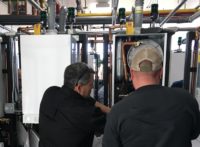
As we head into Q2 for 2021, according to Michael Luz, President and Chief Executive Officer, Viessmann Manufacturing US, the markets in our industry have made a strong turnaround, leading to an optimistic short-term outlook. We continue with our forecast series with major players in the industry. The following is an exclusive Q&A with Luz Read more

Michael Luz
As we head into Q2 for 2021, according to Michael Luz, President and Chief Executive Officer, Viessmann Manufacturing US, the markets in our industry have made a strong turnaround, leading to an optimistic short-term outlook. We continue with our forecast series with major players in the industry. The following is an exclusive Q&A with Luz regarding the economy:
MH: What does the short-term economy look like as it relates to Viessmann?
LUZ: Our short-term outlook for the year is quite optimistic; so far for the first quarter we are trending around 30% higher in revenue in comparison to 2020. We do see a lot of home renovation activity on the residential side driving demand. At the same time, we have not experienced a slowdown in commercial activity this year and right now it is quoting and shipping season in the construction markets.
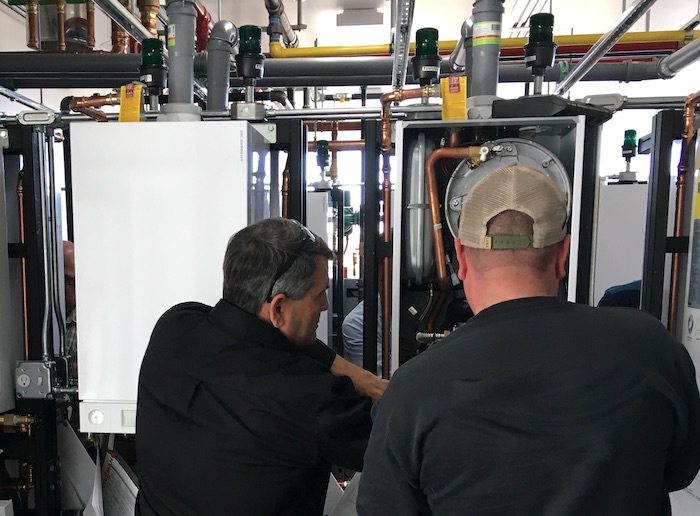
What do we look at for indicators? We look at trends related to order intake year over year. We look at economic indicators including forecasts on U.S. manufacturing and durable goods wholesaler indices.
MH: How does (has) Viessmann positioned itself from the “fallout” of COVID-19?
LUZ: We expect some levels of normalcy to return to the U.S. and our industry in the second half of this year 2021. Although the pandemic has impacted our sales last year, we have seen a strong rebound that started in Q4 of last year and has continued into the first quarter of this year. Viessmann has not missed a beat supporting its customer base during the pandemic, being available in person where appropriate and needed as well as virtually for technical support, customer training and marketing. As an essential business, our logistics operation has been open continuously through the entire pandemic with all necessary safety protocols in place.
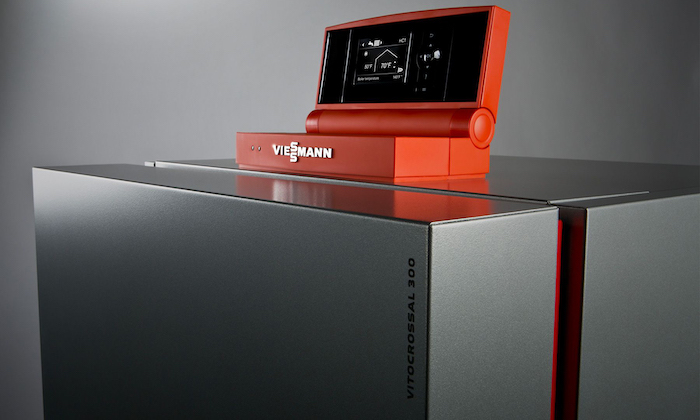
MH: Is the only certainty heading into early 2021 uncertainty? How do you forecast and budget for such uncertainty? (Or is it fairly certain at this point during the pandemic?)
LUZ: As a business we are very much used to operating in an uncertain environment, taking into account many factors that could impact our business starting with raw material prices, potential supply bottlenecks on certain components, potential transportation capacity issues to quickly changing customer preferences. From many years of experience, we take all of those into account and give it our best to produce an accurate forecast. Was it particularly challenging doing this during a once-in-a-generation pandemic? Yes. Did we always get it right? No. Lucky for us and our industry, our markets turned around fairly quickly and have come back strongly.
MH: Without getting overly political, does a change at the presidential level (and congress) change the outlook for your company, if at all? (Infrastructure, regulations, green energy initiatives, etc.)
LUZ: Listening to our economic advisors and their analysis of historical data, federal governments with the same party controlling the White House, the Senate and the House of Representatives have always been phases of solid growth for the U.S. economy. Looking at some of the green initiatives that the current administration is pushing, we are ready for those and very well positioned as a company in the HVAC sector with a vision of “Creating living spaces for generations to come.”
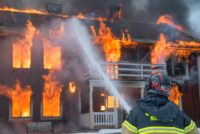
Every contractor has a variety of risks at any given moment. Sometimes those risks are heightened depending on the location of the work, and the project taking place. Even experienced contractors need to be aware of the possibilities. Most venues like hotels, restaurants, and hospital buildings will have a range of fire risk prevention, fire Read more
Every contractor has a variety of risks at any given moment. Sometimes those risks are heightened depending on the location of the work, and the project taking place.
Even experienced contractors need to be aware of the possibilities.
Most venues like hotels, restaurants, and hospital buildings will have a range of fire risk prevention, fire doors, large atrium smoke curtains, as well as regular inspections.
The typical building site will also run a number of checks, but the risks are still there on both counts.
Here are some of the most common fire risks during construction:
Temp lighting and electrics
All temporary lighting and electrical outputs should be installed to meet the requirements of any electric code standards. However, sometimes these things are installed quickly and remain unchecked. Ensure that all temporary installments meet the required guidelines.
This also includes temporary heaters. While they should all be listed and tested before they are used, old heaters are in circulation. Ensuring there is enough space around the heater so that nothing is at risk of catching fire.
Fire protection
Having the location prepared with fire extinguishers and sandpipes is essential until the smoke alarms and sprinklers have power. These items should be easy to access and can help in the case of a fire breakout.
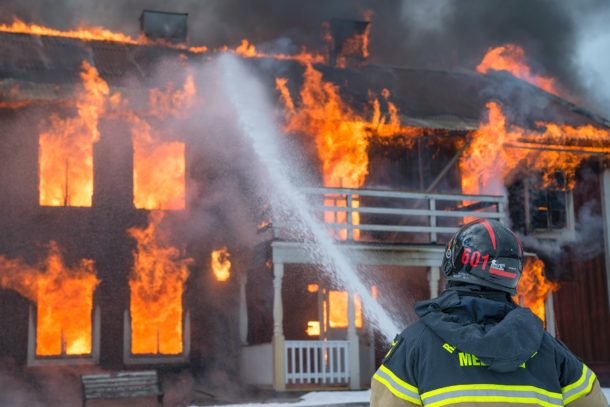
Photo by Daniel Tausis on Unsplash
Arson
Building sites that are unsecured are at risk of theft, arson, vandalism, and other illegal activities.
To reduce the risk of unwanted entry consider a nightguard, motion sensor floodlighting, alarms, and other perimeter controls.
The accidental fire caused by cigarette smoking can be prevented by having a no-smoking policy on-site, or provide a temporary smoking shelter at the very edges of the site.
Hot Work
All of the hot work that you do could cause a fire at any point. After doing work like soldering, grinding, and working with other combustibles should be watched for at least 30 minutes after usage so that they are not a fire risk.
The cool-down period is one of the most important parts of avoiding fires when it comes to hot work.
Tools
If your tools are older, or they run on batteries then there is a higher chance that they will overheat or malfunction. For all tools that need to be charged, the charging ports should be outside of areas that have a lot of rubble or debris.
This also includes keeping skips at least 10m from the building area where possible.
Building sites, home repairs, and maintenance work always come with some risks. Fire risks are something that can be prevented and reduced when there is the appropriate step taken.
Regular inspections of the work area, and ensuring that you personally as a contractor ensure your personal work area and your tools are the best possible standard.
At the end of each workday during the cool-down period is the ideal time to make sure that you have turned off all of the machinery and everything has been unplugged from the mains.
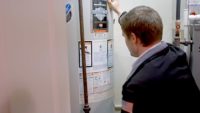
Recently, Mechanical Hub spoke with Dustin Bowerman, Director – Corporate Training and Product Support, Bradford White, regarding information surrounding gas vs. electric water heaters. The following is an exclusive Q&A. Which type of water heater is more environmentally friendly? Why? Bowerman: Although gas heaters have an exhaust element that most will immediately say is less Read more
Recently, Mechanical Hub spoke with Dustin Bowerman, Director – Corporate Training and Product Support, Bradford White, regarding information surrounding gas vs. electric water heaters. The following is an exclusive Q&A.
Which type of water heater is more environmentally friendly? Why?
Bowerman: Although gas heaters have an exhaust element that most will immediately say is less environmentally friendly, you have to consider the carbon footprint of how the electricity is generated, too. Unless coming from a renewable source, there is an inherent environmental effect with both of these fuel sources.
What is the difference in cost between the two types?
Bowerman: It’s mostly about supply and demand, although there is a regulatory element. As a rule, residential electric water heaters have fewer components, therefore are less costly to manufacture; however, in some locations, regulations or codes are driving towards the use of heat pump water heaters (HPWHs).
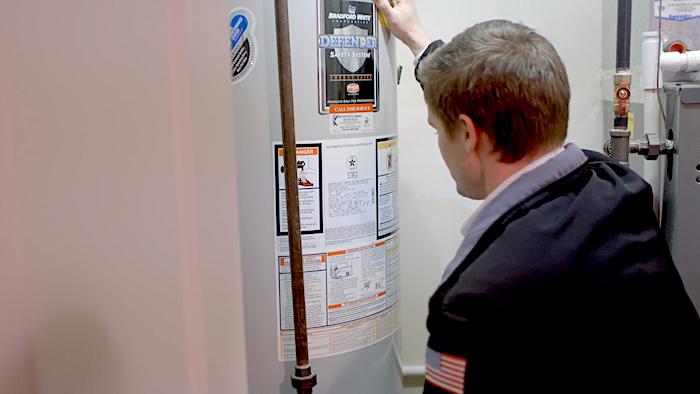
Is there a noticeable difference in return on investment for each type?
Bowerman: Both categories offer high efficiency options, as well as specialty products such as tankless or heat pump water heaters, that can reduce utility spend while delivering the same amount or more hot water than previous models. Though, these higher efficiency options typically come with higher maintenance costs.
Normally, a homeowner will request a replacement of what was already there. How difficult is it to change to a specific water heater source (gas or electric) if the home is equipped with only on type of energy source? (If home has only electric source for WH, what goes into gas conversion and vice versa)
Bowerman: Upgrading utilities can be fairly involved and will certainly require a professional’s experience. If converting from gas to electric, not only will a plumber be needed, but the job will require an electrician, to upgrade the electrical panel and run an outlet for an electric water heater. Converting from electric to gas may require adding gas piping to the home or updating the system to handle the additional demand. An all-electric home likely doesn’t have a chimney system, making gas water heater options more limited. Direct vent, power vent or power direct gas model would need to be utilized. Natural gas availability is also sometimes limited, so propane options may have to be considered if a home or business owner wants to stop using an electric product.
Overall, which is easier to install?
Bowerman: Water connections are the same on both gas and electric. Gas water heaters will have both a gas connection and an exhaust connection that must be done to complete the installation. An electric water heater has line voltage connections with, as a rule, three connections total. Both should be safely installed to comply with all local code requirements by a professional.
Does brand matter more than water heater type?
Bowerman: The type of application is always important, just like having the right tool for the job. Both types of water heaters have their strengths. Of course, brand does matter. Not every water heater is manufactured to the same level of quality nor does every company provide the same level of support and customer service.
There is a lot of talk about legionella and water-borne pathogens lately. Is there one type that is more beneficial in terms of this?
Bowerman: No. Energy source does not impact the quality of the cold-water supply being delivered to the water heater.
What is the ratio of homeowners across the country using one type over the other?
Bowerman: Generally, the entire water heater market is close to a 50/50 split on gas versus electric.
For electric, what happens during a power outage?
Bowerman: The electric water heater requires electricity to heat water. If power is lost, the tank will not reheat the stored water until the power is restored. The already heated water in the tank will remain usable until depleted or gradually cool down.
Does tankless (electric vs. gas) add another layer or dimension to this conversation? Explain.
Bowerman: Yes. Conversations about tankless water heaters are common; however, in many situations the electric options are not as often considered for whole home applications. Electrical requirements may be unrealistic for many homes while gas technologies have made great advancements making tankless gas viable, using natural gas or propane, in the right installations and climates.
Is the footprint between the two (gas vs. electric) noticeable in terms of space?
Bowerman: In terms of the actual products, like gallon capacities are commonly similar diameters, using comparable footprints. Overall, space variations will be more about the gas product’s “add-ons” (e.g. blower, draft hood) due to venting requirements.
In terms of longevity, which type is more reliable?
Bowerman: National averages for functional lifespan tend to be a couple years longer on electric water heaters.
Can you talk in terms of efficiency for both types?
Bowerman: Both energy sources offer high efficiency models. If looking at base models, electric water heaters employ immersion heating elements. As these are directly submersed into the water, most of the elements’ heat energy is being absorbed into the surrounding water. Gas water heaters employ a combustion chamber that traditionally is located below the water tank. Heat is transferred through the bottom of the tank in addition to the flue(s) that is surrounded by the stored water.
This isn’t the whole story. Annual operating cost is another measurement than can be used to compare models. While these costs are largely influenced by the local utility pricing, gas models usually show less annual operating costs. Water heaters are rated based upon how much hot water they can deliver (i.e. First Hour Rating). Depending on their First Hour Rating, models will fall into one of four draw bins. A model must only be compared to other models in the same draw bin, as this will impact the operating cost.
Could the decision gas vs. electric come down to how much water will be needed to heat? (How many people in the home and for what functions)
Bowerman: Infrastructure, what fuel source is available, and hot water demand are the largest variables in water heater selection and contractors need to understand these prior to making suggestions and doing installations.
Are electric water heaters safer?
Bowerman: Having your water heater installed and serviced by a qualified professional is the best way to make sure that your gas or electric fueled water heater is performing properly and safely.
Finally, why is the question of gas vs. electric so polarizing?
Bowerman: It’s due to a lack of understanding. For many contractors in the plumbing trade, electricity is not a part of their daily work, making it mysterious. For consumers, it’s similar. They are generally more comfortable with what they use on a daily basis and has historically worked for them.
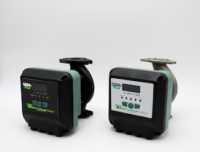
Taco Comfort Solutions® has expanded their family of easy to use, high-efficiency ECM circulators with the addition of the 0034e™ and 0034ePlus™ models. With a maximum of 34 feet of head and 50 gpm, the new circulators offer up to 85% energy savings over a conventional circulator. These circulators are available with cast iron or Read more
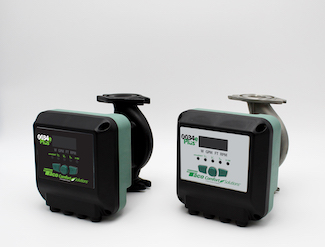 Taco Comfort Solutions® has expanded their family of easy to use, high-efficiency ECM circulators with the addition of the 0034e™ and 0034ePlus™ models. With a maximum of 34 feet of head and 50 gpm, the new circulators offer up to 85% energy savings over a conventional circulator.
Taco Comfort Solutions® has expanded their family of easy to use, high-efficiency ECM circulators with the addition of the 0034e™ and 0034ePlus™ models. With a maximum of 34 feet of head and 50 gpm, the new circulators offer up to 85% energy savings over a conventional circulator.
These circulators are available with cast iron or NSF/ANSI 61 & 372 certified stainless steel volutes, so they are ideal for closed-loop heating systems as well as domestic hot water recirculation systems. Both circulators also offer a convenient, rotatable control box cover for a professional look, no matter the orientation of the installed circulator.
The 0034e features an easy-to-use dial with five operating modes, including constant pressure, fixed speed, Taco’s exclusive activeADAPT™ self-adjusting proportional pressure, and 0-10V capability. The 0034ePlus adds proportional pressure and more constant pressure settings as well as a digital display with real-time feedback, including watts, GPM, feet of head, and RPM. Both circulators are dual-voltage 115V/230V.
Both new circulators come with exclusive features that make Taco’s ECM high-efficiency circulators so easy to use, including SureStart® automatic unblocking and air purging, BIO Barrier® black iron oxide protection, dual electrical knockouts, six-inch stranded leads, recessed flange nut-grabbers and double insulation so no ground wire is needed.
For more information, visit www.TacoComfort.com
